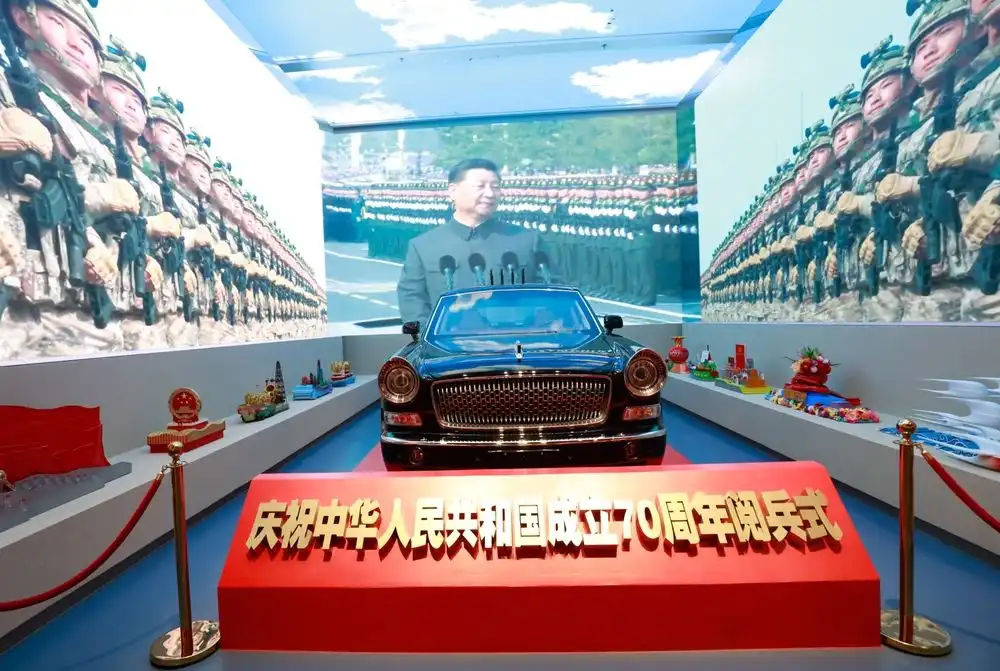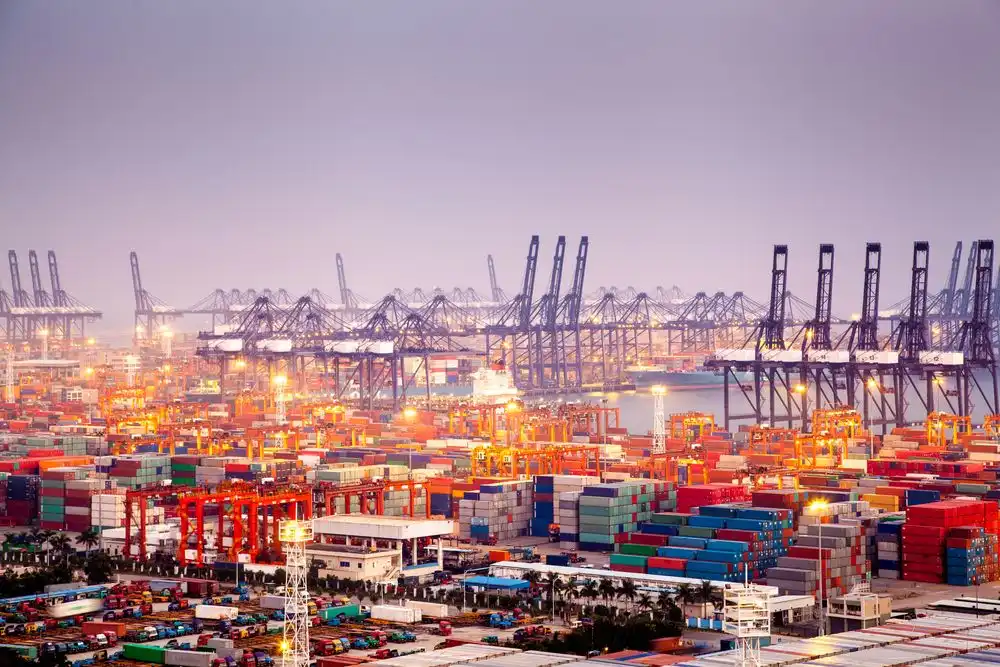Home>Looking through 100 years of the Chinese Communist Party.
11.03.2024
Looking through 100 years of the Chinese Communist Party.
Interview with Jérôme Doyon and Chloé Froissart
Jérôme Doyon (CERI Sciences Po) and Chloé Froissart (IFRAE Inalco ) have recently edited The Chinese Communist Party. A 100-Year Trajectory (ANU Press, 2023), available in Open Access. This volume, bringing together complementary disciplines and perspectives, investigates the many facets of the Chinese Communist Party’s 100-year trajectory. Chloé and Jérôme answer our questions in the interview below.
Would you mind presenting the general structure of the book, and the “four lenses” through which the contributors examine the Party’s 100-year trajectory?
The book explores the Chinese Communist Party’s (CCP) historical trajectory through four lenses, looking at its two core features—organisation and ideology—and also its two main historical missions—modernising the country and unifying it through a Party-led nation-building project. The first part examines the different aspects of the CCP’s organisational adaption and expansion. The second part dives into the ideological tensions between the Party’s revolutionary heritage and recent developments, as well as the discursive bricolage the Party develops in an attempt to reconcile the two. The third part explores the CCP’s attempts to modernise the country, and how, in turn, this project compels the CCP to adapt to a diversifying society. And the fourth part delves into the CCP’s efforts to build a unified nation despite ethnic and territorial diversity, using methods ranging from subtle co-optation to forced assimilation. The book’s originality lies in the diversity of its approach, which allows it to combine thematic and disciplinary breadth with historical depth. Its long-term and multiscalar approach offers complex and nuanced insights, eschewing any Party grand narrative, and unravelling underlying trends and logics, composed of adaption but also contradictions, resistance and sometimes setbacks that may be overlooked when focusing on the short term.
You mention that the CCP has a guerilla heritage. Would you mind explaining what you mean by this expression and how this specific heritage has helped—and continues to help—the Party?
The CCP is the product of clandestine struggle and violence. This heritage explains the Party’s hierarchical structure, its culture of secrecy and control, which have remained central in the Party’s operating mode, as Jean-Pierre Cabestan highlights in his chapter on continuities and change in the Party’s organisation. Moreover, its guerrilla heritage contributes to the Party’s cohesion and how it relates to other social groups based on an “us vs. them” logic, as highlighted by Emmanuel Jourda’s work on the origins of the CCP’s united front thinking. This legacy is also fundamental to understanding the uniqueness of the relationship between the Party and the Chinese State, which fluctuates between periods of cohabitation and others of Party expansionism, as stressed by Patricia Thornton. When it comes to the practice of power, the structures that permitted mobilisation during the civil war became the basis for the CCP’s mode of governing, monitoring, and sanctioning the Chinese population after 1949. Its guerrilla heritage has in fact contributed to the CCP’s decentralised and adaptive features, making it adept at embracing uncertainty, and at experimenting and dealing with various challenges, ranging from widespread unrest to global epidemics.
You refer to the CCP's "two main historical missions: modernising the country and unifying it through a Party-led, nation-building project”. Has the Party succeeded in these two missions and can you develop this idea further?
The issue of modernisation began to arise in China following its traumatic encounter with the West during the Opium Wars. Modernisation means, above all, making China a powerful and prosperous country capable of competing with the West. It has two aspects: technical modernisation of a scientific, military, agricultural, and industrial nature, and political modernisation. At the turn of the nineteenth and twentieth centuries, Chinese leaders and intellectuals borrowed notions of democracy, republic, constitutionalism, nation, etc. from Western nation-states because they then embodied modernity, and attempted to turn them into techniques of government adapted to the concrete conditions of the country. The CCP is part of this heritage and our book addresses these two dimensions of Chinese modernisation.
The technical aspect of modernisation is at the heart of the book’s third part. What interested us in particular was how the aim of modernising the country has continuously reconfigured the alliances between the Party and its social bases: agriculture was modernised and peasants’ livelihood increased, but the Party severed its alliance with peasants as a social class; China became the factory of the world in the 2000s by sacrificing its old working class and turning its new working class of migrant workers into proletarians. Social inequalities have also significantly increased in these two social groups, and only the most well-off are taking part in and benefiting from modernisation. The CCP’s relationship with the “capitalists”, now renamed entrepreneurs, has also fluctuated over the years. Sometimes enemies to defeat, sometimes Party allies, entrepreneurs have enjoyed diverse degrees of autonomy from the CCP.

Altogether, what these chapters actually highlight is that modernisation is not a straightforward path to a predetermined goal but is all about balancing contradictions in a pragmatic manner and proceeds sometimes with leaps and bounds, sometimes with setbacks. Interestingly, while navigating these contradictions over the years, the CCP’s priorities have changed and have come to be at odds with its political and ideological foundations, such as representing the proletariat and building a socialist country as per Marxist principles. Hence now the need for the Party to redefine what socialism and Marxism are…
The challenges of nation-building and unifying the country stem from China being originally an empire, encompassing a variety of territories and populations. With the founding of the People’s Republic of China (PRC) came the need to establish a nation-state under the aegis of the CCP. Even if we leave Taiwan aside, the nation-building process has been fraught not only with tensions on the margins of the PRC (such as in Tibet, Xinjiang, Mongolia, and also Hong Kong) as locals demand the autonomy that was originally promised to them by the CCP, but also with conflicting conceptions of the nation within the CCP. The current Party’s will to impose an essentialist and unifying vision of the nation by means of increased control, surveillance, and brutal repression denotes a failure of the nation-building process.
The CCP is present in every part of Chinese society and is therefore well equipped to monitor the population, but this strength is also a weakness in that it makes the Party more vulnerable and exposed to society. Can you help us understand why and how this is visible?
Throughout the PRC’s history, the Party’s relation to the State and the society has been characterised by ebbs and flows. While China is now experiencing a “totalitarian reflux” coming from the top, and the Party’s ramifications go deep into every corner of the society, it remains unable to control or swallow up the society fully. In other words, there is still a society, which, albeit much more constrained, still interacts with the Party and may impact how it operates. With branches extending to every corner of Chinese society, the CCP has an extraordinary monitoring capacity, but is also more exposed to society than most political parties. Moreover, increased control may trigger backlash, as seen with the A4 movement against the suppression of all freedoms—and, literally, breathing space—under the Zero-Covid policy in November 2022. The more the Party tightens its grip on society, the less it leaves space for autonomy and support of social actors, the more it manifests its fear of losing control.

The Party has an international expansion strategy. Can you tell us about this?
China exports not only goods, investments, and people, but also social, economic, environmental, legal, and political practices, and the CCP itself plays a central role in this process. Existing research tends to stress the Party’s central role in foreign policy-making or its attempts at exporting the “Chinese model of governance”. It is less well-known that the CCP also exports its structures and political practices that are characterised by opacity, the targeting and co-optation of actors and networks, as well as strict organisational discipline. This form of overseas expansion relies on two “magic weapons”, which were, according to Mao Zedong, central in the CCP’s struggle for domestic domination: overseas “Party-building”, here the expansion of Party cells among Chinese communities abroad as explored in Frank Pieke’s chapter; and overseas “united front tactics” aimed at co-opting potential opponents, which was embodied in the development of local influence networks as explored by Samson Yuen and Edmund Cheng in their work on Hong Kong.
What are the current major challenges to the CCP? Is Taiwan high on the list?
The current significant challenges to the CCP are clearly its economic downturn amid the indebtedness of local governments, youth unemployment, and the real estate crisis. Economic growth was the primary pillar of the CCP's legitimacy, and the Party now has to compensate for its decline by strengthening the role of ideology and political control, which might, in turn, further stifle the economy. With growth of around 5% but whose structural slowdown is likely to accelerate in the years to come, and exports in sharp decline, China’s current economic situation seriously compromises Xi Jinping’s pledge to bring “common prosperity” to its people and undermines the attractiveness of the so-called “Chinese model” domestically and abroad. When it comes to Taiwan, while it would be extremely risky and costly, this economic downturn coupled with the current level of tensions, with both the Taiwan government and the Biden administration, means that the possibility of a diversionary war cannot therefore be completely dismissed. What better way to distract the Chinese people from their economic and social hardships than to unite them around a common nationalistic goal? However, the US presidential elections in November, which might bring Donald Trump and his America First policy back into power, might change one of the key variables in the equation posed by Gunter Schubert in his contribution to the volume—China’s perception of the US-Taiwan relationship—and, therefore, diminish the CCP’s “neo-imperial” impetus.
Interview by Miriam Périer, CERI.
Image copyright:
- Interview cover image: Celebration for the 90th anniversary of the establishment of the CCP, photo by windmoon for Shutterstock
- Book cover, ANU Press
- Museum of the Communist Party of China, Beijin, July 2023, photo by humphery for Shutterstock
- China Shenzhen, Yantian port, photo by zhangyang13576997233 for Shutterstock
Follow us
Contact us
Media Contact
Coralie Meyer
Phone : +33 (0)1 58 71 70 85
coralie.meyer@sciencespo.fr
Corinne Deloy
Phone : +33 (0)1 58 71 70 68
corinne.deloy@sciencespo.fr
